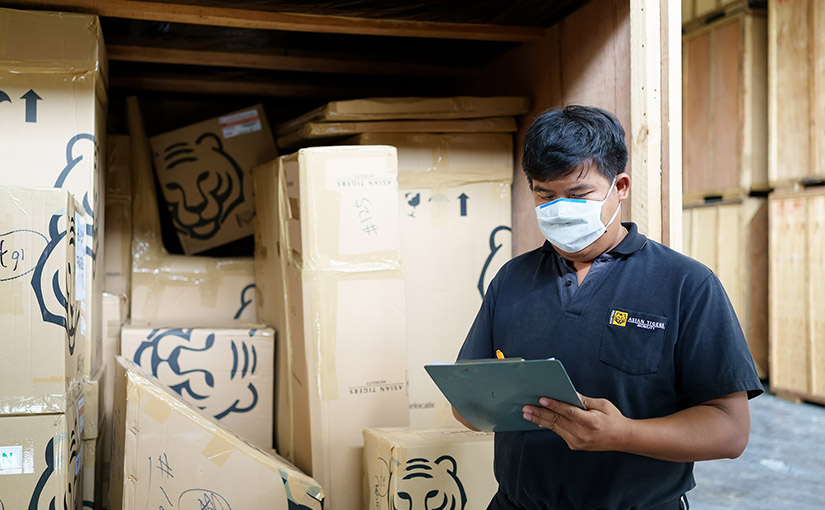Packing Tips for Long-term Storage

Properly packaging is an important part of preparing your items for long-term storage; this way, your items will be in better shape for months and even years. From furniture and garments to electronic gadgets and sentimental trinkets, using the right technique and materials can make a huge difference. This guide will offer very important tips for long-term storage that will aid in the protection of your possessions so that they can come out from storage just as good as they went in.
Select Appropriate Storage Unit
One of the key decisions to be made before actually packing items is the selection of a storage unit. If, for example, you plan on storing items longer, then you need to get a climate-controlled storage unit, especially when you are storing those items which are highly sensitive to humidity and temperature fluctuations.
Tip: Make a personal visit to the storage facility to inspect for cleanliness as well as the security functions. The facility should have 24/7 surveillance, be gated, and the grounds should be in good shape.
High-Quality Packing Supplies
Perhaps one of the most simple yet very useful long-term storage tips can be getting quality packing supplies. The use of strong materials means your goods are more adequately protected from dust, dampness, or possible damage due to wear and tear over time.
Basic Packing Supplies:
- Sturdy, varied-sized cardboard boxes
- Bubble wrap and packing paper to wrap fragile items
- Plastic bins, if more protection against moisture is needed
- Heavy-duty packing tape to seal boxes
- Furniture covers and stretch wrap for larger items
- Silica gel packets or desiccants to absorb moisture
Tip: Do not use old or damaged boxes, as these will wear out over time and may risk your items in the move.
Clean and Dry Everything Properly
Before you store anything for the long term, cleaning and drying of your items must first be done. Dust and dirt, combined with moisture over a period of time, can cause great damage in the form of mold growth, rust, or permanent staining. Items such as furniture, appliances, and clothes are among those which must not have dirt or any moisture on them before packing.
Tip: For clothes and fabrics, make sure they are absolutely dry to prevent mildew. For added protection, utilize vacuum-sealed bags.
Disassemble Large Items
Break down large items, such as furniture or machinery, before storage. This will not only save space but also prevent any damage that may occur. Remove table legs and shelves, along with other removable pieces, and wrap them well. Place hardware-screws, bolts, etc.-into labeled, sealable plastic bags and tape them to the item they belong with.
Tip: Wrap furniture in blankets, bubble wrap, or even professional furniture covers to protect them from scratches and dents.
Label Boxes Clearly
Labeling is one of the simplest yet most crucial tips for long-term storage. You will most likely forget what is enclosed in each box months or years afterward, and clear labeling will save you time and frustration when retrieving your items. Include on the outside of each box what it is holding inside and note whether it is fragile or requires special handling.
Tip: Label your boxes with permanent markers and number them, using an inventory list for reference.
Pack Items Strategically
Good packing techniques will offer the best security for your items during long-term storage. The following are some of the best tips for long-term storage in packing your items strategically to avoid damage. Here is how:
- Heavy Items First: Place heavier items at the bottom of boxes or storage units and lighter items on top. This prevents heavier objects from crushing delicate ones.
- Fill Empty Spaces: Use packing paper, bubble wrap, or towels to fill gaps inside boxes. This helps prevent items from shifting or breaking during transport and storage.
- Stack Carefully: Place heavier and sturdier boxes at the bottom and fragile or lighter ones on top when stacking boxes in the storage unit.
Protect Fragile Items
Fragile items require special preparation and attention when packing and storing longer. Apply abundant padding and wrapping material in advance, protecting fragile items like glassware, ceramics, or electronic equipment against impacts. Generous uses of bubble wrap, foam peanuts, or packing paper will provide the needed cushioning.
Tip: Electronic devices should have their batteries removed, and each separately wrapped with anti-static bubble wrap. Cords and accessories shall be kept in one place and ought to be clearly labeled.
Use Plastic Containers for Sensitive Items
While cardboard boxes will do for most of the possessions, some of these items will require added protection from moisture, dust, or pests. Plastic containers with tight-fitting lids are ideal for storing sensitive items such as clothing, documents, and photos. Unlike cardboard, plastic bins protect against the elements a lot better long-term.
Tip: For even greater protection, use vacuum-sealed bags inside your plastic containers to really take the possibility of moisture damage off the table.
Avoid Using Plastic Wrap on Leather and Wood
Plastic wrap is good for covering valuables to protect them from dust; however, when placed on leather and wood, it can prevent the materials from breathing and, therefore, trap moisture into these materials, which may lead to mildew and rot. Take better care of the leather and wooden pieces with blankets, furniture pads, or covers that will enable them to breathe freely.
Tip: For wooden furniture, apply a layer of furniture polish or wax before storage to help protect the wood from drying out or cracking.
Plan for Easy Access
Even though you may be storing for the long term, there is always a possibility you will need certain things before the storage period is over. As you’re placing items inside your storage unit, you should be arranging them so that more frequently needed belongings can be at the front and accessible.
Tip: Create an explicit inventory or map as to where items are located for easy retrieval from the storage unit.
Consider Pest Prevention
Long-term storage facilities may invite pests from time to time, which can ruin your stored items. As much as most of the reputable storage units do have a pest control system, it’s good to take one more step.
Long-Term Storage Tips to Keep Pests Away:
- Make use of pest repellants like mothballs or cedar blocks.
- Seal your boxes firmly and avoid storing items that are prone to perishability.
- Place traps or deterrents around the entrance of your storage unit.
Check Your Storage Unit Periodically
Even though you’re storing items for the long term, periodic checks are necessary to help everything stay in good condition. Look for early signs of pests, moisture, or damage. Take necessary action to combat the issue.
Tip: Consider visiting your storage facility every now and then to ensure everything is fine.
Conclusion
Packing for long-term storage takes a bit more forethought and effort than packing for short-term storage, but your items will remain safe and sound with the right strategies in place. Follow these tips for long-term storage, and you’ll protect your belongings from damage, pests, and the elements so that when you need to retrieve them, they’ll be in great shape. Each step plays an important role in the success of long-term storage: from using high-quality packing materials to measures that will prevent moisture and pests.
If you’d like to discover the latest information about the moving and relocation world, please also check other industry news from Asian Tigers Group.
Your trusted moving support is only a few clicks away from your hand. Contact the Asian Tigers office near your origin or destination for your next move. You can also check our Frequently Asked Questions resource, AI-powered by Tiger Move Bot.









